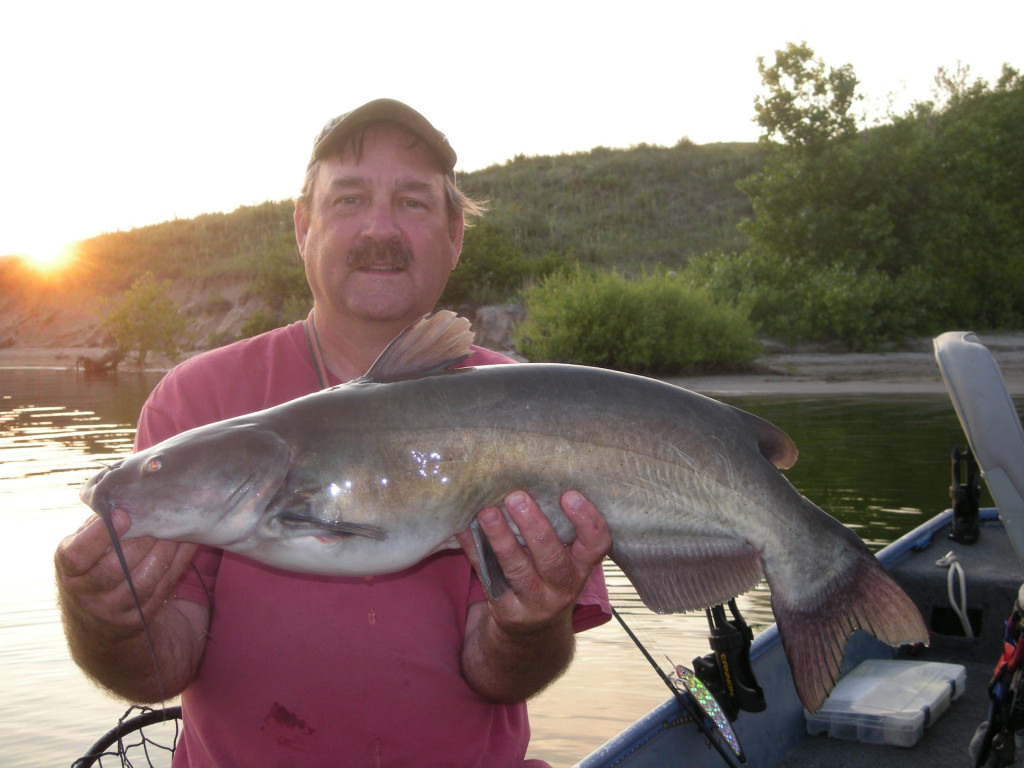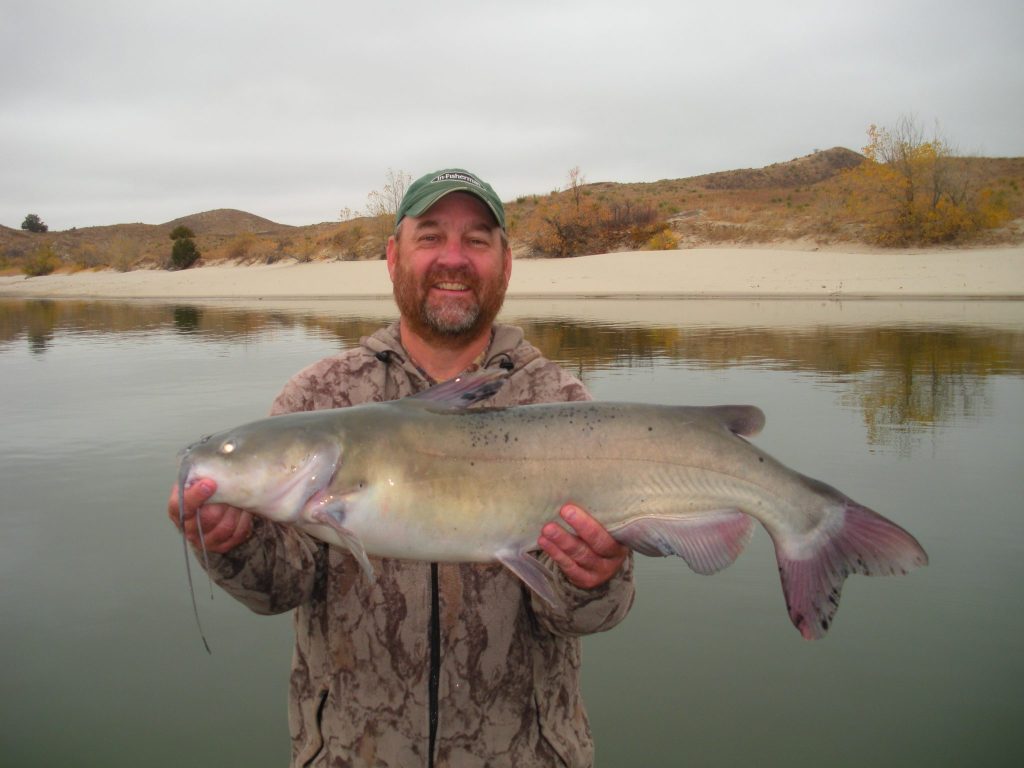
By Daryl Bauer
Have heard or seen comments from several anglers recently surprised at catching catfish, some of them big catfish, on artificial lures! That really is not unusual. In fact, catfish are more predators than they are scavengers!
Before I go any further, let me define some terms: Nebraska is home to three species of large catfish, channel, flathead and blue. Two of those species, blue and flathead catfish are especially predatory. By far the best bait for flatheads is a lively baitfish. Rarely are they caught on anything else. Flatheads are every bit the top-of-the-food-chain, apex predators that muskies are (Flats and ‘Skies). As a matter of fact, I have not tossed anything but artificial baits for flatheads for years. Cannot tell you the last flathead I caught on anything but an artificial lure.
Likewise, blue catfish are also very much predators. They spend much of their time pursuing open-water baitfish or perhaps mussels. Hands down, most blue catfish are caught on fresh cut bait.
Let me continue this blog post by talking specifically about channel catfish, the most-commonly caught catfish species in Nebraska.
Channel catfish have a reputation as bottom feeders. Many believe that they just lazily swim around sucking up stinky, dead stuff from the bottom. Right?
Nope, that ain’t all they do. They are predators, sure, different than the bass, walleyes and pike we think of as predator fish, but predators just the same. I had a 5-pound channel cat spit up a baby muskrat once, the puked-up fur floating in the water was a nice touch. It was not even a really big catfish. If that ain’t being predatory, I do not know what is!
In reality, channel catfish are omnivorous–they eat a lot of things. Understand that channel cats are literally one big swimming taste bud. They literally have taste buds located all over their body with concentrations of taste buds near the mouth and barbels (i.e. whiskers). So, yes, channel cats are attracted to a variety of smelly food items. That includes dead, stinky stuff. I will not even mention what they eat underneath a cormorant rookery. At times they will also eat fruits, even vegetation. Mulberries are a favorite, corn and nuts during periods of flooding.
Simply put, channel catfish eat what is available. What is available in most habitats where channel cats live? Well, most of the time that would be other fish, aquatic insects, and other critters in or near the water. Do they swim around looking for naturally-occurring Sonny’s Super Sticky? Hotdogs? Chicken soaked in strawberry Jell-O?
Nope.

Sure, they will eat that stuff because they are curious about different smells and tastes. But, most of the time they are pursuing bluegills and shad, frogs and even muskrats! And, they might be swimming around preying on them just like bass, walleyes and pike.
Go ahead and use your favorite stinky, smelly catfish bait. It will work, you may even catch a bunch of channel cats doing that. Just remember that smaller fish are most likely to be curious and sample exotic baits. Conversely, do not be surprised when big channel cats grab your crankbait, swimbait or even top-water!
Since channel catfish will consume so many different food items, it can pay to experiment. Catfish anglers often venture forth with a bunch of different bait options. If one does not work, try another. However, let me suggest that you look around. The best bait will likely be the most available natural food item. In most cases that will be some small fish or baitfish. Yes, channel cats, especially large channel cats, will chomp large lively baitfish. They also like fresh cut-bait just as well. Put a line in the water, catch what is available, then within regulations, cut it up and use it for bait–put that predator/prey interaction to work for you.
Late summer into early fall, frogs and even grasshoppers can be great catfish baits, especially in pits, ponds, rivers and streams. I have seen grasshoppers work like magic on river catfish this time of year.
Right now our catfish species have finished spawning and are on the feed. Indeed, they already are in a race to put on as much weight as possible before water temps. start cooling. They are active and they are feeding. GO FISH!
Am I going to suggest to you that you intentionally toss artificial lures for channel catfish? No. I will do that for flatheads, but if you are targeting channel cats you will likely be fishing some type of live, dead, cut or prepared bait. However, I have to admit to you that I do not spend a lot of time soaking baits targeting channel cats. Nope, I just keep casting the variety of artificial baits I use for other predator fish knowing that from time to time I am going to pick up the occasional “bycatch” catfish. Sometimes that bycatch is a big channel cat.
Hate it when that happens.
